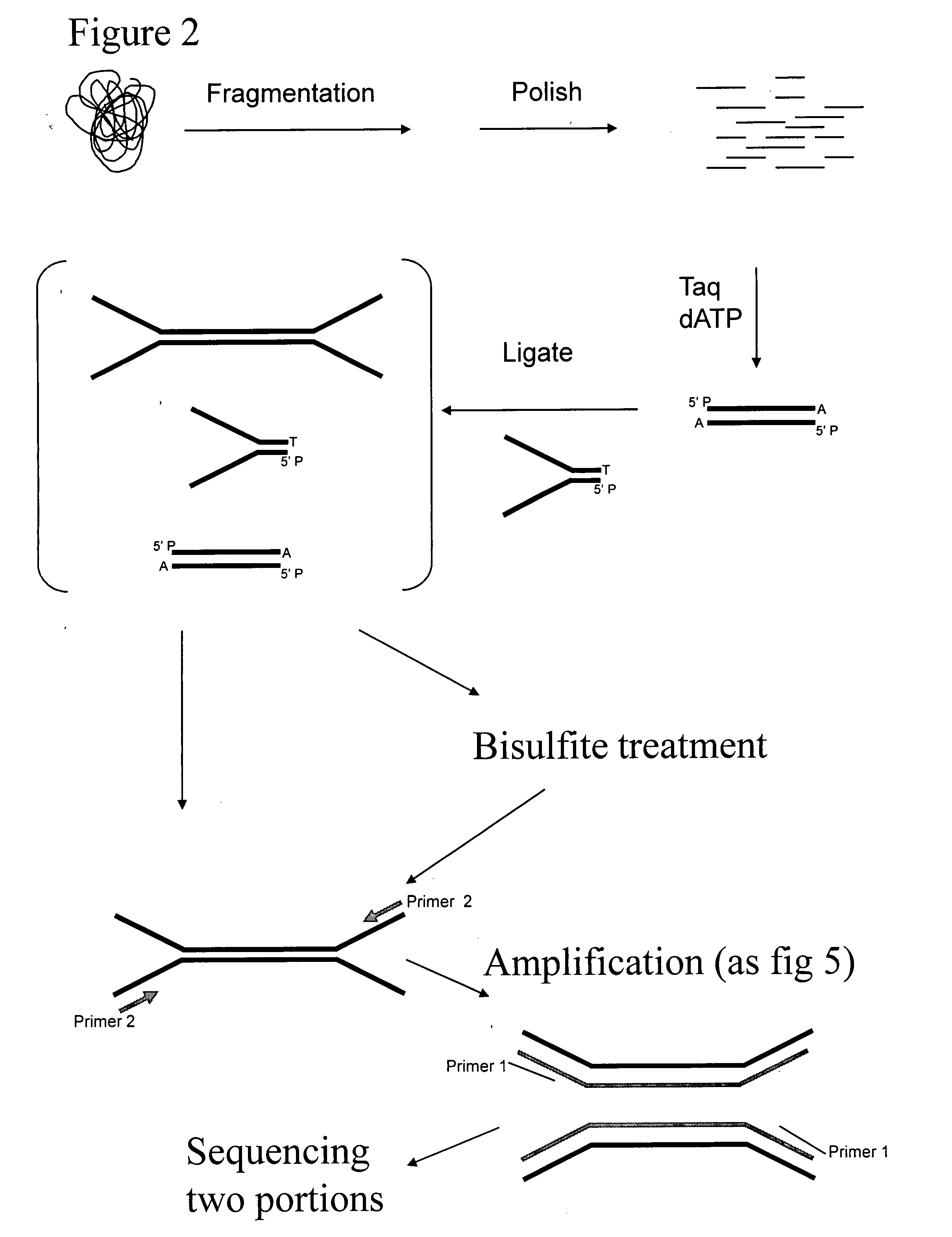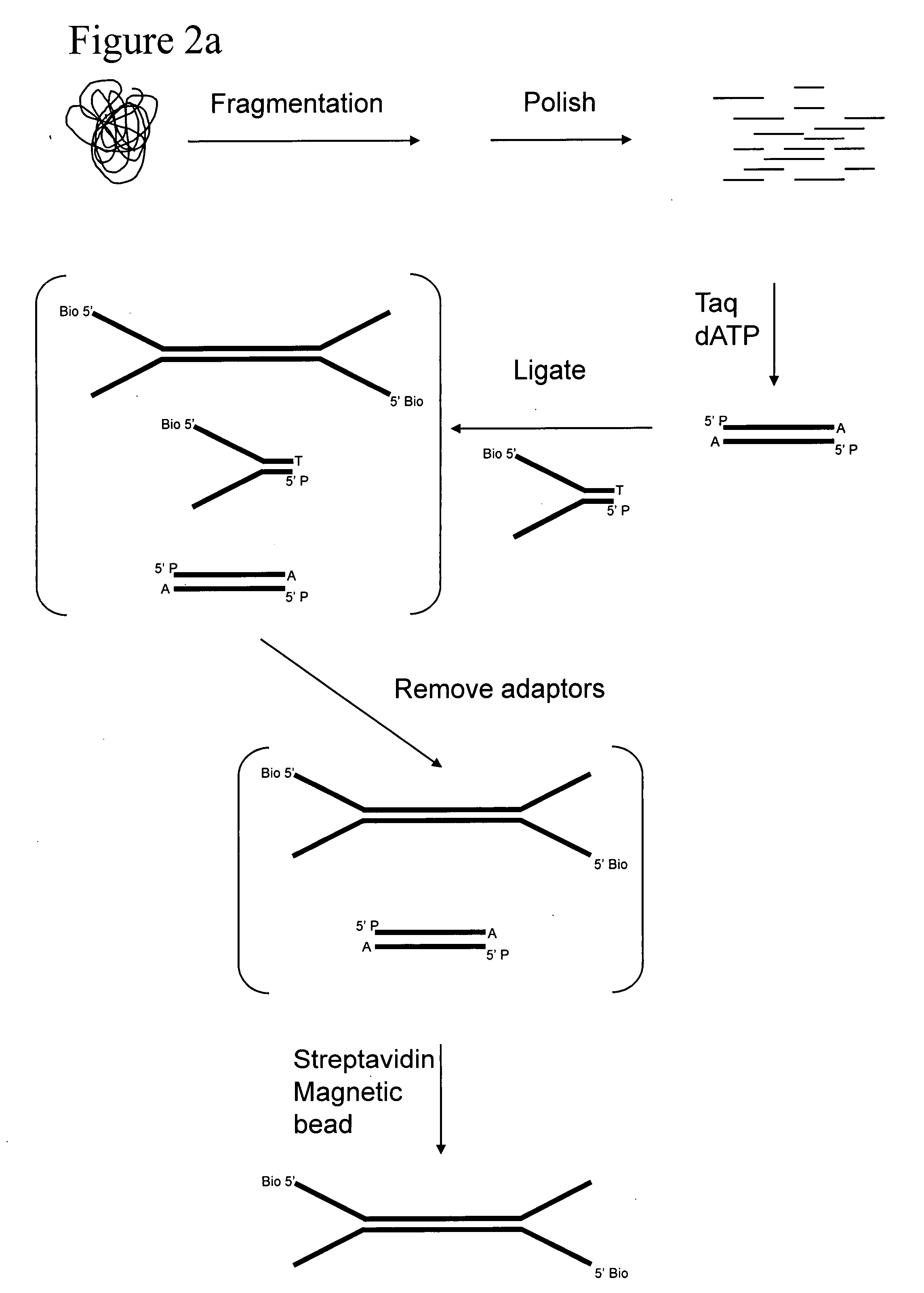Preparation of templates for methylation analysis
a methylation analysis and template technology, applied in the field of preparation of templates for methylation analysis, can solve the problems of limited methods, simple methods, and standard sanger sequencing procedures, and achieve the effect of facilitating the treatment of such polynucleotides and facilitating the analysis of target sequence methylation status
- Summary
- Abstract
- Description
- Claims
- Application Information
AI Technical Summary
Benefits of technology
Problems solved by technology
Method used
Image
Examples
examples
[0148]In one embodiment of the invention, the genomic DNA is fragmented by limited digestion with a methylation-insensitive restriction enzyme rather than by random hydrodynamic shearing. After size fractionation on an agarose gel, a narrow size window is isolated which constitutes only a small portion of the genome. By careful size-selection, essentially the same genomic subfraction can be isolated from different input samples and compared by sequencing. This reduced representation approach has been used for comparative sequencing (SNP detection; Altshuler et al., Nature 407:513-516 (2000)) and has been proposed as a high-throughput method for comparative DNA methylation analysis (Meissner et al., Nucleic Acids Res. 33:5868-5877, 2005). In the exemplary embodiment illustrated in FIG. 10a, genomic DNA from 4 different mouse cell types is digested with the restriction enzyme MspI and size selected to 40-220 bp resulting in a reduced representation of the mouse genome that is enriched...
PUM
| Property | Measurement | Unit |
|---|---|---|
| Length | aaaaa | aaaaa |
| Selectivity | aaaaa | aaaaa |
Abstract
Description
Claims
Application Information
 Login to View More
Login to View More - R&D
- Intellectual Property
- Life Sciences
- Materials
- Tech Scout
- Unparalleled Data Quality
- Higher Quality Content
- 60% Fewer Hallucinations
Browse by: Latest US Patents, China's latest patents, Technical Efficacy Thesaurus, Application Domain, Technology Topic, Popular Technical Reports.
© 2025 PatSnap. All rights reserved.Legal|Privacy policy|Modern Slavery Act Transparency Statement|Sitemap|About US| Contact US: help@patsnap.com



